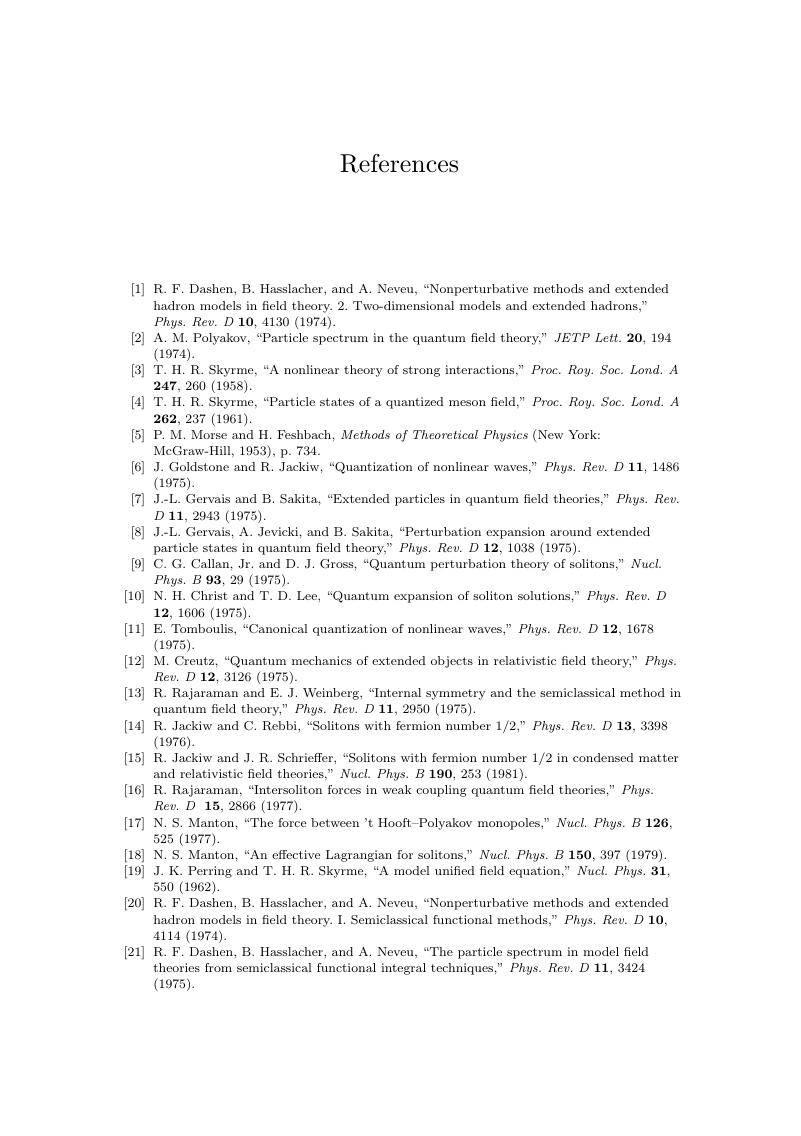Book contents
- Frontmatter
- Contents
- Preface
- 1 Introduction
- 2 One-dimensional solitons
- 3 Solitons in more dimensions—Vortices and strings
- 4 Some topology
- 5 Magnetic monopoles with U(1) charges
- 6 Magnetic monopoles in larger gauge groups
- 7 Cosmological implications and experimental bounds
- 8 BPS solitons, supersymmetry, and duality
- 9 Euclidean solutions
- 10 Yang–Mills instantons
- 11 Instantons, fermions, and physical consequences
- 12 Vacuum decay
- Appendix A Roots and weights
- Appendix B Index theorems for BPS solitons
- References
- Index
- References
References
Published online by Cambridge University Press: 05 September 2012
- Frontmatter
- Contents
- Preface
- 1 Introduction
- 2 One-dimensional solitons
- 3 Solitons in more dimensions—Vortices and strings
- 4 Some topology
- 5 Magnetic monopoles with U(1) charges
- 6 Magnetic monopoles in larger gauge groups
- 7 Cosmological implications and experimental bounds
- 8 BPS solitons, supersymmetry, and duality
- 9 Euclidean solutions
- 10 Yang–Mills instantons
- 11 Instantons, fermions, and physical consequences
- 12 Vacuum decay
- Appendix A Roots and weights
- Appendix B Index theorems for BPS solitons
- References
- Index
- References
Summary

- Type
- Chapter
- Information
- Classical Solutions in Quantum Field TheorySolitons and Instantons in High Energy Physics, pp. 312 - 323Publisher: Cambridge University PressPrint publication year: 2012



